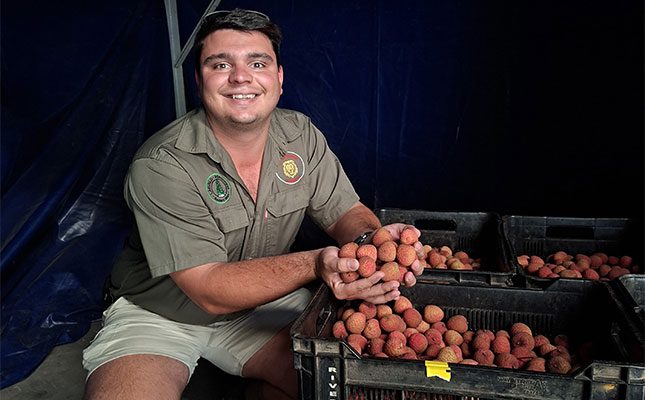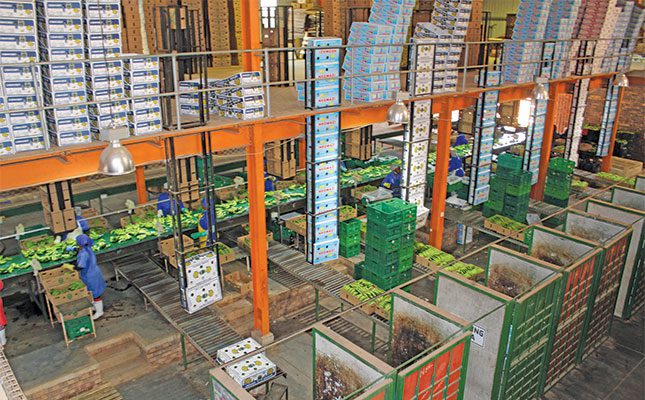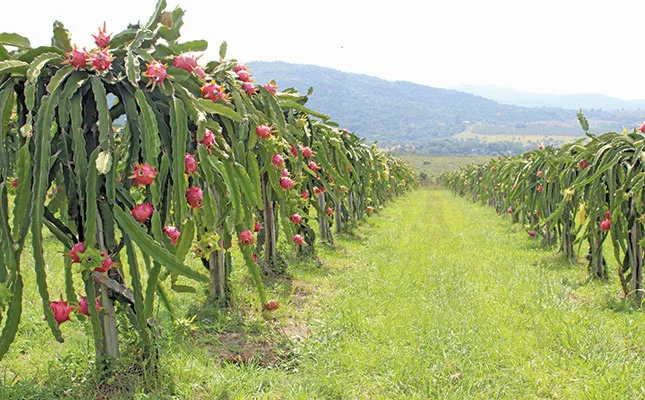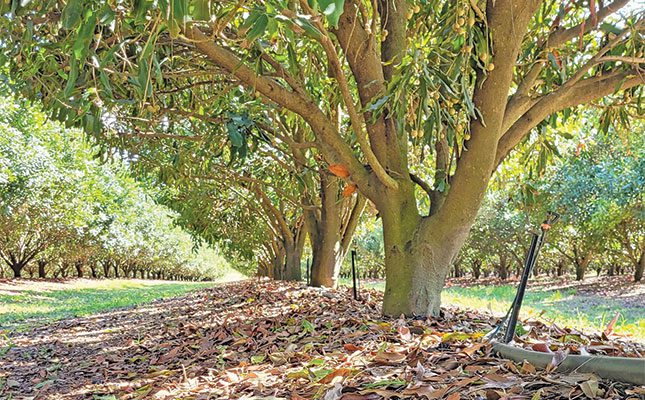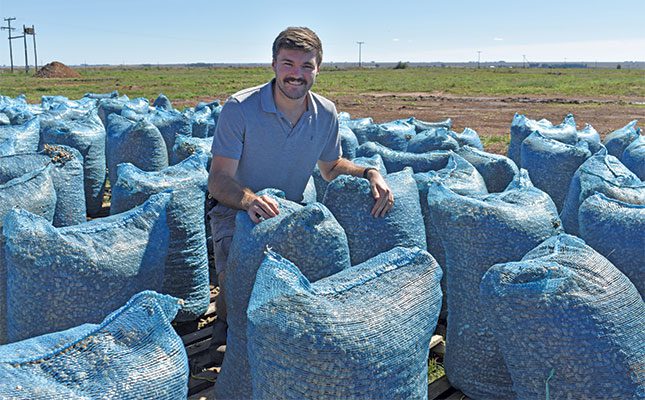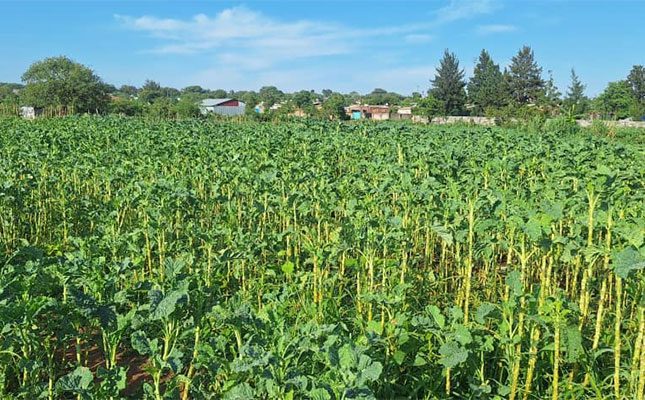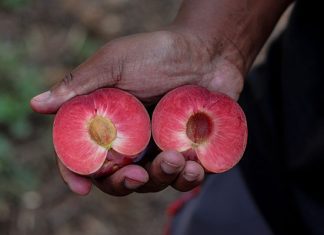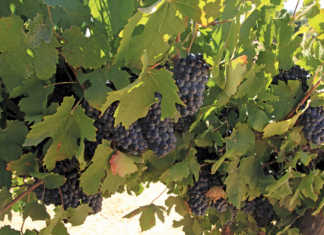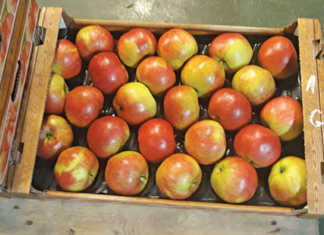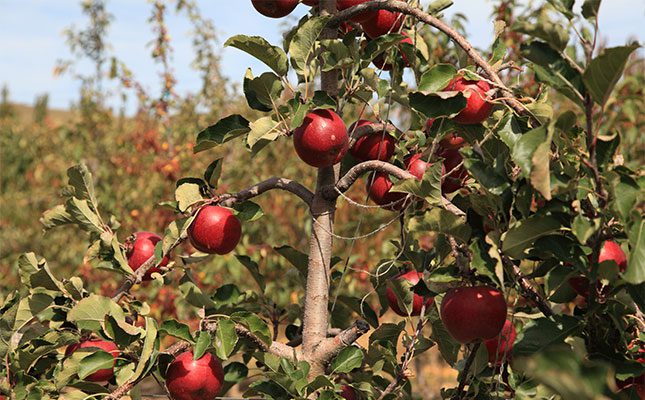
Photo: FW Archive
Apples are a major fruit crop in South Africa, with approximately half of the national production destined for export. Over the past decade, exports have increased by 40%, driven by demand in Asia. In 2025, export volumes are projected to increase by 5%, with red bicoloured varieties accounting for most of the volume increase.
While the Western Cape remains the country’s primary production area, smaller orchards have also been established and are being expanded in Limpopo, Mpumalanga, and the Free State.
South African varieties
In South Africa, a diverse range of apple cultivars is grown to meet local and international demand. Golden Delicious is especially popular in the UK, while Granny Smith is sought after in Northern Europe. Locally and throughout Africa, the sweet varieties are preferred.
Here, we look at the top cultivars, the classics, and some interesting newcomers.
- Royal Gala
Gala apples are easily identifiable bicoloured apples with light red stripes, favoured for their sweetness and attractive appearance. Their flesh is creamy yellow with a crisp texture, and they have a subtle floral aroma. Originating in New Zealand in the 1920s, mutations were later developed to meet the demand for redder apples.
One such mutation is Royal Gala, which arrived in South Africa in the 1970s and, despite initial hesitation about the variety, eventually comprised 10% to 15% of all plantings. In the early 1990s, a superior mutation was discovered on a farm in the Witzenberg Valley near Ceres in the Western Cape. Named Royal Beaut, it quickly gained popularity and became widely planted.
- BigBucks
Another Royal Gala mutation was discovered in the Elgin region in 2011. Unlike traditional Gala apples, this variety lacked the familiar stripes and instead had a deep wine-red skin. Named BigBucks, it has become the fastest-growing variety in South Africa and by 2024, 2,5 million trees had been planted.
BigBucks has also generated much international interest, and Australia secured plant breeders’ rights to the variety last year.
BigBucks apples have white flesh; a crisp, juicy bite; and a fragrant, intensely sweet flavour profile.
- Cripps Pink/Pink Lady
Cripps Pink was developed in 1973 by the Department of Agriculture in Western Australia. This attractive natural cross, combining traits of Lady Williams and Golden Delicious, sparked a breeding programme and further propagation across second- and third-generation trees. This was followed by the development of what is now known as the Pink Lady®, one of the most successful apple brands in the world.
Handpicked for quality, Pink Lady apples are valued for their rosy blush, crisp texture, and distinctive sweet-tart flavour. The flesh is juicy and yellow-white. In the Southern Hemisphere, South Africa is the largest producer of this premium, fully managed variety.
As colour intensity becomes increasingly important, particularly in emerging export markets, growers have been responding by planting clones such as Rosy Glow and Lady in Red in recent years, which differ from the original Cripps Pink due to their colour intensity and higher colour coverage.
- Granny Smith
The history of Granny Smith apples dates back more than a century. Having originated in Australia and planted for the first time in South Africa in 1919, cultivation peaked in the late 1970s through to the mid-1980s.
Popular as eating and cooking apples – and with their distinctive green skin, firm white flesh and sweet-tart flavour – Granny Smith apples have carved out a strong niche with little competition in terms of colour and flavour.
While they remain among the top traditional cultivars in South Africa, the challenge for growers is to produce greener apples, as export-quality Granny Smiths must not have a red blush.
- Golden Delicious
Golden Delicious is popular not only in South Africa but also across Africa and in international markets. Locally grown Golden Delicious has an excellent reputation overseas, where it is also recognised as the sweetest. This is a pale green to golden apple with a fragrant aroma; firm, crisp texture; and mild, sweet flavour.
Highly versatile, Golden Delicious is used in baking and cider production and can be stored for up to a year. It was discovered in West Virginia, US, and introduced into South Africa in 1930.
Under the right climatic conditions, and in certain regions, Golden Delicious apples can develop a subtle pink blush.
- Starking and Topred
A classic and local favourite, Starking apples are red-striped with cream-coloured flesh and have a juicy, sweet taste. A US cultivar and a mutation of Red Delicious, Starking was introduced to South Africa in the 1940s.
Another mutation, Topred, arrived in the country in the early 1970s. With a uniform deep red colour, almost-white flesh, and crisp texture, it is also sweet and very juicy.
- Fuji
Th Fuji apple was bred in Japan in 1939 and came to South Africa in the 1980s. It is a light red variety, described as ripening with a Turkish delight blush. With a very sweet and mild flavour, low acidity, and dense, creamy-coloured flesh, many apples of this part-red variety were initially downgraded due to market demand for red apples. Mutations have, however, rescued the cultivar.
The South African Plant Improvement Organisation Trust developed a full-red Fuji mutation called Fuji Royal, and plant breeders’ rights were granted in 2018. The organisation says this variety shows promise as an improved strain to deliver better colour and achieve more market share.
Local Fuji apples are the most popular cultivar exported to China and are also extensively grown there.
- Opal®
These unique, bright-yellow apples with an orange blush have a crunchy texture and sweet, tangy flavour reminiscent of quinces, mangoes, and pears. The flesh is white to ivory. Another unique trait is that they do not turn brown once cut open.
This non-GMO cross between Golden Delicious and Topaz was bred in the Czech Republic and, in 2014, Dutoit Agri signed a licensing deal to grow it in South Africa.
- Kissabel®
Kissabel® apples are a novel variety featuring naturally red to pink flesh, a trait achieved through years of careful natural breeding first started in France by crossing wild red-fleshed apples with quality commercial varieties.
Developed as part of the global Innovative Farmer Organizations for Research and Extension Development breeding programme, and following its success in Europe and North America, trials are now under way in the Southern Hemisphere. Australia is already commercialising the cultivar, while Argentina and Chile are in the early production stages.
Locally, Dutoit Agri began cultivating Kissabel in 2023. The first semi-commercial harvest in 2024 showed promise, with colour development particularly strong in warmer growing regions. The company continues to test and refine varieties.
Currently available in the Western Cape for a limited period from select retailers, the commercial launch has been slated for 2026. With rising interest in premium and visually distinctive fruit, the Kissabel may offer new opportunities for growers.
- Sassy™
With an intense ruby-red colour, sweet ‘zing’, and a firm, crunchy texture, Sassy is another new addition to South Africa’s cultivars. The apple hails from New Zealand and is grown locally in Ceres. It has an unmistakable asymmetrical conical shape and is a hybrid of Scifresh, Fuji, and Sciros varieties.
While supply is limited because the orchards are young, Sassy is garnering attention, and volumes are expected to grow as trees mature and plantings increase.

